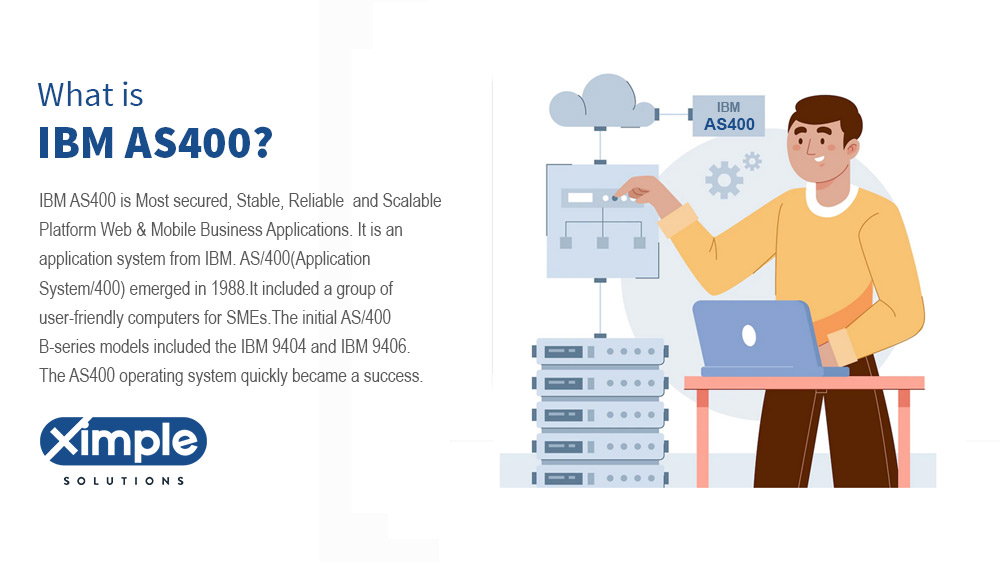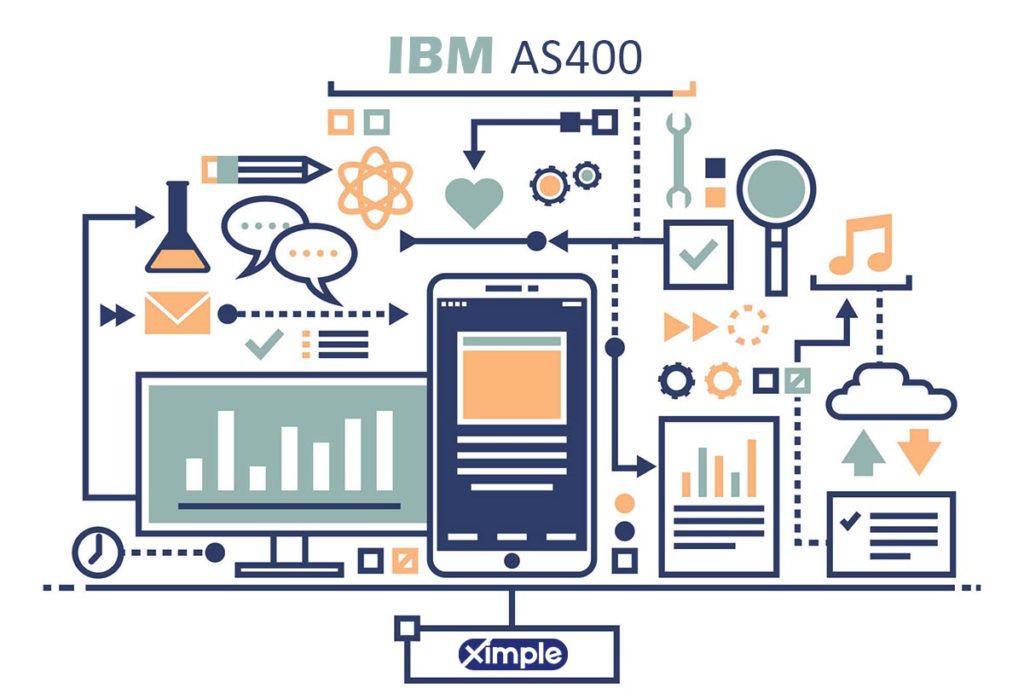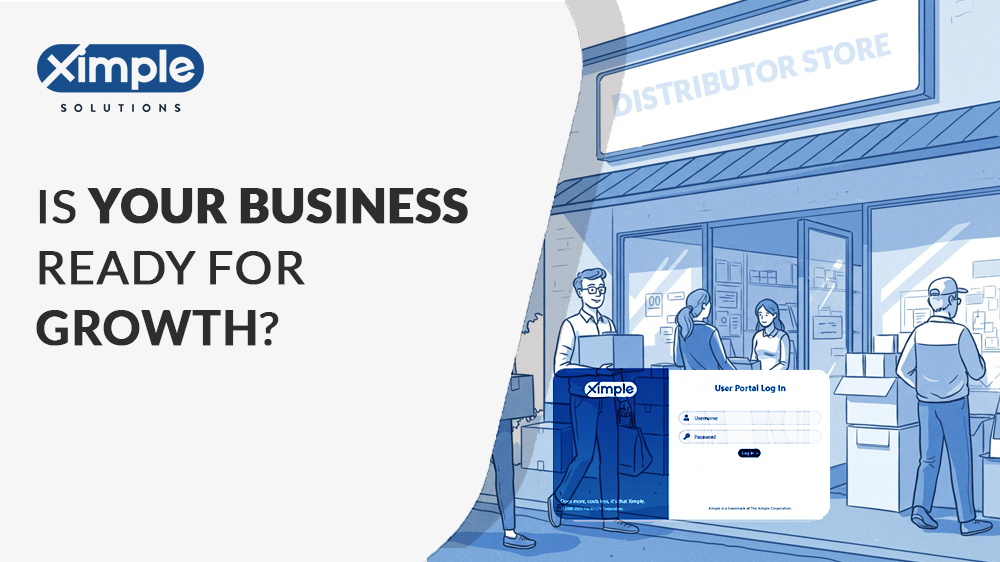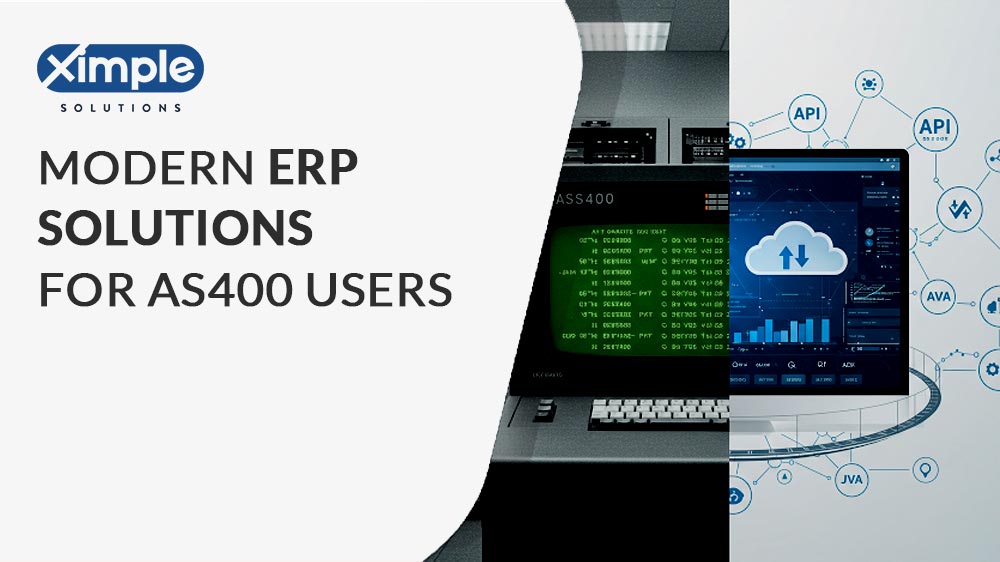What is AS400?

This article about AS400 provides an overview of the history of the platform, its characteristics, who still uses it, why companies still use it, its pros and cons, integrated web services, top facts about IBM AS/400, new uses of the iSeries AS/400, and answers to frequently asked questions. The article concludes that the IBM i is active and more scalable and is still used successfully by several companies.

IBM AS400 is the Most secure, Stable, Reliable, and Scalable Platform for Web & Mobile Business Applications. It is an application system from IBM. AS/400(Application System/400) emerged in 1988. It included a group of user-friendly computers for SMEs.The initial AS/400 B-series models included the IBM 9404 and IBM 9406. The AS400 operating system quickly became a success. History shows that IBM had shipped almost half a million as400 models by 1997. There was no doubt that the Application System 400 was helpful before the immense growth of technology. Even though some organizations still use it, most companies have stopped or have integrated it with modern software. This leads to this question: is the IBM series still alive, or is it dead? We will try to answer this question below.
Table of Contents
History of IBM 400
The first IBM AS400 computer system emerged in 1988. It consisted of the operating system called the OS/400 and the hardware system called the AS/400. Additionally, the first production had an integrated database and other core functions. Over the years, the AS/400 and OS/400 have seen many upgrades.
Before it came to be, IBM had made a computer using the object-based OS in 1978. It was called System/38. The relational database found is similar to the Db2 we know now. Also, some of its concepts made the AS400 software system run smoothly. In 1983, the company made another computer system called System/36. It used RPGII as the primary programming language, and it was only a file management machine.
In 2000, IBM branded the AS/400 again to eServer iSeries and had the OS/400 operating system. This became a server for running internet businesses. In 2006, the company released the iSystem server which consisted of the i5/OS operating system. It became an alternative for companies that would not run the Windows OS.
In 2008, the company released the Power Systems or IBM Power. It was a combination of i5/OS (now called IBM i) and the Unix (also called AIX) OS. Power Systems has a built-in database called DBMS, DB2/400. It provides web-based applications that are easy to execute in MySQL or PHP with an Apache server. Although IBM has rebranded its product over the years, it has retained compatibility.
Hence, it is easy to run the initial AS/400 programs in modern Power Systems without an issue. As a result, some companies have been unable to stop using the AS400 i series. There is hope because IBM updates its IBM i series every three years.
With IBM i 7.4, you’ll get continuous availability (thanks to IBM Db2 Mirror for i), the latest security features, and easy integration with IoT, AI and Watson.

What are the characteristics of the AS/400 e-server i-series?
The main characteristics of the AS/400 include the following:
- Object-based OS The object-based OS has unique things not available in other kinds of operating systems. For instance, it has single-level storage. As400 System i is more secure and stable for running businesses because of its uniqueness.
- Broader integration components “ The AS400 software is easy to use with other software systems. It has several features for easier integration. These include web application servers, web services servers, the DB2 relation database, and more. All combined, these components can do more than 300 tasks.Â
- Efficient apportioning “The as400 mainframe iSeries is a firmware-based virtualization system that works better than some modern server applications.
- The administrator interface works well – IBM provides great technologies for doing routine tasks within an organization. It is not the case with Linux and Windows as they have to source tools from other vendors.
- It is cheaper to run The IBM i-series as400 entails fewer hardware servers. So it is cheaper and easier to place in your data center.
Who still uses AS/400?
Up to today, some companies continue to use AS/400. About 10.1 percent of organizations run IBM i with their servers, according to iDatalabs. After HP, IBM AS400 comes second in terms of popularity. IBM’s product use is more prevalent in the manufacturing and IT fields. However, the use of the AS 400 operating system runs across many industries around the globe. For instance, Robert Bosch, a German multinational business, is among the top users of IBM Power Systems. Generally, the platform finds use in organizations of all sizes.
The IBM i market has a dual nature: an extensive small and midsized client community alongside a strong select group of users in large enterprises. The majority (approximately 70 percent) of IBM i users are small and midsized enterprises, with 30 percent being large enterprises with 1,000+ employees.
Why do companies still bother to use AS 400?
There are claims that IBM does not offer technical support to companies that adopt cloud computing. There are also views that as/400 is obsolete and might be dead. Even with such knowledge, why do some companies still use it? Those who use it run it as an AS400 ERP system. Its mainframe works for most manufacturers, SAP users, and database management systems. As far as the wholesale distribution business is concerned, now they are switching to cloud ERP as it’s more accessible, accurate, and comes with a very affordable price.
With the growth of the AS/400 cloud that works with many applications, most companies won’t stop using it. Besides, some retailers like the item because of is cost-effective and scalable. Here are more reasons why some companies still run the AS/400.
- The current Power Systems iseries are still as reliable and exemplary as the original AS/400. The original platform had CPUs that could run three to five times better than their counterparts.
- Buyers have a wide range of options. If the problem is low capital, IBM has entry-level systems for small players. It also offers high-power server systems for large-scale organizations and data centers. Additionally, people can depend upon several operating systems, including IBM i, RedHat Enterprise Linux, etc.
- It is cost-effective to retain the AS400 System i. When running current AS/400 servers, you can still run the 1988 programs. Also, the cost of shifting from IBM hardware to any other may seem minor. However, the price of disrupting your operations when adopting new hardware might be too high. The cost of installing, configuring, and updating new software when moving from the AS/400 also is high. You may view shifting as a disruption when you have run the same platform for years.
- AS/400 is a complete solution. The as400 overview information shows that it is a complete solution. Even during the cloud computing era, the AS400 continues to charge users for what they are using.
Unlike Windows technology-based servers, the IBM i operating environment is almost always used to run multiple business applications and databases securely and efficiently on the same server. As a result, clients report that they have fewer servers to manage with IBM i when compared to Windows. This easy deployment, upgrading and management gives IBM i a significant advantage when evaluating TCO.
Pros and cons of AS/400
As400 Pros
- The first advantage is that as400 I do not need constant rebooting, making it more stable.
- It is easier to integrate AS/400 databases and programming languages securely.
- As as400 accounting systems and other systems use object-oriented operating systems, they are less prone to viruses. Thus, they are the safest around.
As400 Cons
- It is an expensive system when compared to other hardware systems. However, the cost depends on if you are an entry-level or a large-scale business.
- People have a negative mindset regarding AS400. They feel that the platform works best only for large-scale businesses and might be more expensive to run for small players. However, people’s views have nothing to do with the AS400 system commands and functioning.
Integrated web services for the IBM series
These are the technologies within the IBM AS/400 i-Series. It entails the Integrated Web Service server, which allows the execution of objects as web services. In this regard, the AS/400 i-series cloud offers all the benefits of cloud hosting. It is flexible, scalable, and secure. With this form of cloud computing, organizations can run swiftly and reduce their operation overheads.
As companies should pay for their resources, they can reduce their running capital. When making significant changes to their operations, companies can manage their resources and achieve their plans with ease using AS/400 i-Series.
Additionally, those running in the AS/400 cloud can avoid database licensing costs when shifting from another platform. Above all, the as400 shareware can make your Information Technology environment more straightforward and agile.
Top facts about AS400
An as400 system operator knows these facts about their platform.
- The entire IBM platform has three unique operating systems and seven separate OS versions. It has had over twenty revisions too.
- OS/400 i5-OS has run on six unique hardware systems solely for IBM.
- The AS/400 and prior systems have run on seventeen different CPUs.
- IBM has sold over fifty hardware system models to run its IBM AS 400 iSeries product line.
- Users can use their current IBM platform to run the 1988 databases.
What are the new uses of I series AS/400?
According to IBM, its platform can achieve the following things for you:
- With its ample RAM and hard disk space, the IBM i Series AS/400 makes a good repository for big data.
- It has a web server, firewall, and unique applications for accomplishing tasks like warehouse management, order management, vending, and more.
- It is easy to integrate IBM as400e server iseries with Java virtual machine. Its tools can create commercial applications with Java.
- It includes Domino and Notes for offering organizations advanced email, collaboration, and file-sharing capabilities.
FAQ
What is AS400 used for?
AS/400 by IBM is over three decades old but remains reliable in various industries. Most companies use it as an enterprise resource planning (ERP) software system. It also functions as a database management system. Although the AS/400 is highly adaptable, its deployment process varies based on a business type. The recent emergence of the AS400 cloud helped create more applications for this IBM architecture. The newest uses for this system include:
- Data storage
- A development system for Java-based applications
- Running eCommerce businesses as AS/400 has a suitable web-enabled server with firewall capabilities.
- If integrated with Notes and Domino, the AS/400 can let companies share project files, send emails, and collaborate in other ways online.
What is AS400 called now?
IBM has rebranded the original AS/400 system several times. Now it is known as IBM Power Systems. In 2000, AS/400 was called the eServer iSeries. In 2006, it became IBM System I. In 2008, it changed to IBM Power Systems.
Does AS400 still exist?
Yes, the AS/400 server continues to prevail regardless of advances in information technology. Using the OS/400 operating system, the AS/400 is IBM’s epitome of success. You will find it in the departments of large-scale and small-scale businesses. AS/400 works best in virtually any industry and accepts web-enabled applications.
Is AS400 outdated?
The AS/400 system has existed since 1988. It consists of an IBM-made database and operating system. Over the years, the AS/400 and its hardware system (OS/400) have undergone many alterations and revisions. While they are still reliable, scalable, robust, and secure, people assume that AS/400 systems are obsolete.
Although they have existed for over three decades, the IBM i systems are not outdated. Several companies continue to use them successfully. As the world embraces cloud-based software solutions, IBM has ensured that the AS/400 users are not left behind.
Why do companies still use AS400?
Even if the AS/400 architecture is too old, some companies prefer to keep it. Here are the possible reasons for this behavior.
- IBM AS/400 system boasts superior CPUs with three to five times more power than comparable systems. As a result, users hardly ever encounter server downtimes when hosting SAP and other complex systems.
- AS/400 system includes a variety of choices. Additionally, it is compatible with different operating systems. Hence, users consider the AS/400 one of the most versatile older IT solutions.
- Companies may fear meeting the cost of switching from AS/400 to something else. Shifting from a legacy system to the cloud could also disrupt manufacturing and other processes. The company would not only install and configure the new software to match its needs. It would also need to review and update a lot of data.
- Now that the AS/400 cloud exists, users have a more complete and competitive choice. They can still reduce the total cost of ownership for a solution they have used for decades.
The adaptability of IBM i is guaranteed by an architecture that provides unique dependability, security, flexibility and integration, all of which lead to a significant total cost of ownership advantage.
How do you migrate the AS400 platform to the cloud?
Countless enterprises own a legacy AS/400 platform. If you have it and want to shift your platform to the cloud, you have two best approaches. The first one is re-engineering, and the next one is re-hosting. If your business growth has overtaken the current AS/400 applications, the re-engineering approach is the best choice.
An engineer will alter and modernize your existing AS/400 system to make it more capable of meeting your growing business needs. Re-hosting entails moving mainframe AS/400 applications to the cloud without altering the original code or data analytics tools. Companies move their AS/400 to Microsoft’s Azure, Amazon’s AWS, or Google’s Cloud.
IBM has a multi-cloud strategy for IBM i, which is called hybrid cloud. IBM Cloud strategy continue to ISV partners to provide IaaS, Platform-as-a-Service (PaaS) and DisasterRecovery-as-a-Service (DRaaS). IBM has made IBM i available in the IBM Cloud.
Conclusion
In conclusion, the AS400 platform, now known as IBM Power Systems, is still alive and used by many organizations around the world. Despite being over three decades old, it still offers stability, reliability, and security, making it a popular choice for many companies as an ERP software system and database management system. It offers versatility with a range of options and compatibility with different operating systems. The recent emergence of the AS/400 cloud has also made it more accessible and cost-effective for businesses. While some companies may view the AS/400 as outdated, it still holds a significant advantage in terms of total cost of ownership. IBM continues to update the IBM i series every three years, ensuring that its users stay up to date with the latest technology.
Technically, the IBM AS400 platform has undergone several innovations over the years, including the development of the AS400 cloud. This allows organizations to run their AS400 applications in a cloud environment, which provides the benefits of increased flexibility, scalability, and cost savings. The IBM i series has been updated with the latest technologies, such as IBM Db2 Mirror for i, which provides continuous availability, and the integration of IoT, AI, and Watson. IBM has also created a multi-cloud strategy, which includes IBM i in the IBM Cloud and allows ISV partners to provide IaaS, PaaS, and DRaaS. This has helped keep the IBM AS400 platform relevant and up-to-date in the ever-evolving world of technology.
The adaptability of IBM i is guaranteed by an architecture that provides unique dependability, security, flexibility and integration which lead to a significant total cost of ownership advantage. Recent OS release adds enhancements centered on– security, modernization, and availability.
If you are in the market for a Next Generation Modern Scalable cloud ERP platform for your Wholesale Distribution Business, then Ximple Solution offers Innovative High-quality ERP systems. It uses Java, Microservices, Angular, IBM DB2 database, Material Design Libraries, and Lightweight Web and mobile UI-UX.
Related articles





